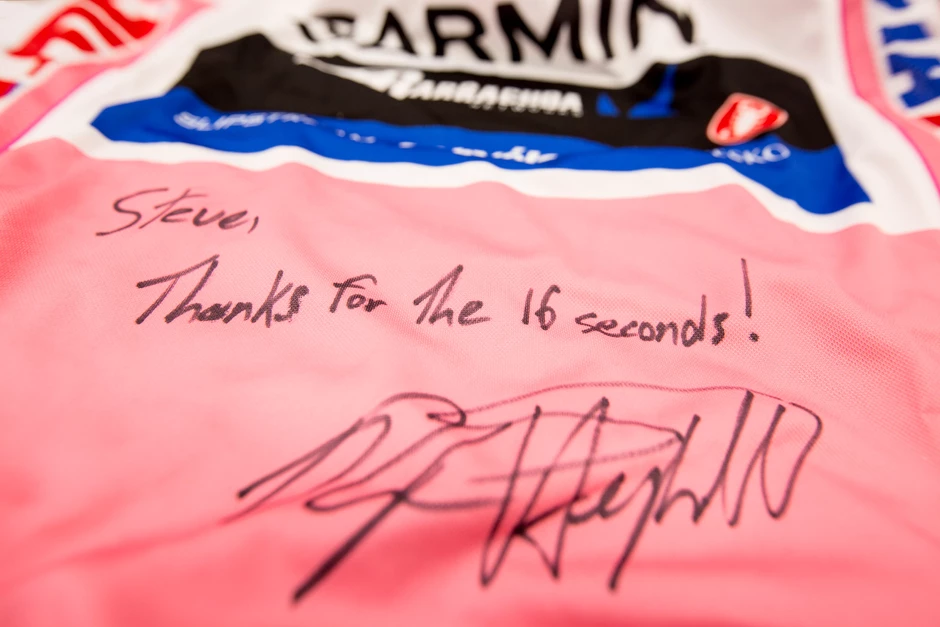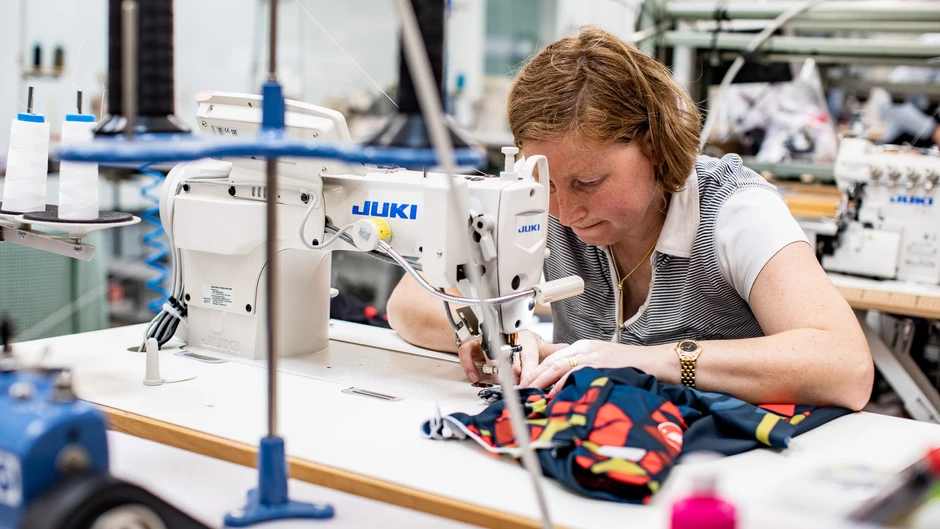Words: Liam Friary
Images: Supplied by Castelli
There are few cycling brands that have iconic status within the sport: Castelli is one of them. The Italian company has a heritage that dates back more than 100 years. Last year, we headed to the small village of Fonzaso in the Italian region of Veneto, nestled in the Dolomites, to take a behind-the-scenes look at Castelli.
Castelli – The Beginning
In order to tell the whole story of Castelli Cycling, we gotta go way back to 1876 when a tailor named Vittore Gianni opened a small shop in Milan. Gianni handmade clothes for Milan businessmen, the Milanese ballet, and AC Milan and Juventus. The first connection with cycling came thanks to Alfredo Binda - ”the lord of the mountain” – five time Giro d’Italia winner between 1922 and 1936, three time world champion and a loyal customer of Gianni’s shop.
It was in 1935 that the breakthrough came: a young fella named Armando Castelli joined Gianni’s team. Castelli was a brilliant boy – full of ideas and ambitions, determined to the point of actually taking over the company for which he worked, in 1939. Castelli’s great ability was to keep the elite clientele Gianni had managed to create, over the years. Clientele which included two true heroes (and now legends) of cycling: Gino Bartali and Fausto Coppi. Coppi, who needs no introduction, is a five time Giro d’Italia winner and twice Tour de France winner, and chose Castelli as his personal tailor – with a new wardrobe every day. Bartali, nicknamed Gino the Pious, won Giro d’Italia three times and the Tour de France twice.
If for 40 years Gianni Vittore had produced only a few garments customised for cyclists, Castelli expanded its production by supplying entire teams of professional cyclists. At the time, this was a smart move both from an economic and marketing point of view. In the following years, the greatest names in cycling, of the time, such as Louison Bobet and Jacques Anquetil, wore Castelli garments – which at the time were not marked with the company name. It is said that Anquetil was the first to wear a silk shirt produced by Armando. The year 1948 was important: Maurizio, son of Armando, was born. From an early age, he fell in love with the world of cycling and the creation and production of sportswear. Maurizio was a promising junior cyclist, but he had to abandon the competitive activity due to a bad hip injury. When he was not training, he would very carefully watch his father’s work carving secrets; developing a keen eye for excellence and attention to detail.
Often, tradition and innovation do not get along very well. In fact, at the beginning of the ’70s, the relationship between Maurizio and his father Armando was not exactly idyllic: the father’s traditional methods came up against the great creativity of his son, combined with the constant idea of progress, innovation, and research. So, in 1974, Armando chose to abandon his father and give life to his own company, simply called: Castelli. Thus, he introduced the logo that characterises the brand today: the scorpion.
Castelli – The Ups and Downs
Maurizio Castelli was a true pioneer of cycling apparel. In 1981, he introduced the sublimation dye so he could have colours, logos and graphics on a technical fabric – changing the face and the history of cycling, and sponsors that invested more and more money into the sport. In ’83, Castelli was the first company to use sublimation technology for sweaters, managing to print graphics and sponsors directly onto the fabric. Bernard Hinault was the first to wear a Castelli windbreaker jersey when he triumphed in the classic “Freccia Vallone” in ‘83, while in ‘84 Francesco Moser was the first to wear thermal clothing during Paris-Roubaix.
In 1995, at the age of 47, Maurizio Castelli died of a heart attack while he was on the “Cipressa” climb, the historic ascent of one of the most famous races in Italy, the Milan-Sanremo. The pioneering philosophy of Maurizio continued to permeate the company, and in ‘96, during the Olympic Games in Atlanta, Paola Pezzo, Olympic gold medallist mountain biker, wore the first completely aerodynamic body suit in the history of cycling.
Unfortunately, as time went on, it became clear that the brand had lost its leader and visionary, Maurizio Castelli. During the years that followed Maurizio Castelli’s death, the company was taken over by a group of five partners; the majority owner was Antonio Colombo of Columbus and Cinelli. During the late ‘90s, Castelli developed its Prosecco jersey material and Y-cut Progetto bib short, all whilst sponsoring the ONCE team. Internally, there were many differences of opinions within Castelli, as they started to expand into other sports such as cross-country skiing. They brought in outside management to steer the ship, but by 2003 the company as on the edge of bankruptcy.
Manifattura Valcismon, the parent company of Sportful, acquired Castelli, rescuing the company in a period that nearly spelled the end for the iconic Italian brand. There was a complete overhaul of the brand and, in an incredible feat, the brand was brought back to life when it was on the edge of financial ruin. The key to this was staying true to Maurizio Castelli’s vision of innovation, performance, design and telling the story of the brand with their marketing. Castelli made its come back in professional cycling in 2007 with Saunier Duval, then with Cervèlo Test Team in 2009 and 2010. That squad folded into Garmin-Cervélo and ultimately became Cannondale-Drapac, which Castelli sponsored from 2011 through 2016.
Over the past 15 years, Castelli’s revenue has increased twelvefold; they’re now selling around 2.2 to 2.5 million pieces of apparel per year. Some of that revenue is going toward its sponsorship of Team Ineos, which began in 2017, meaning that over the past three seasons, Castelli apparel has been worn by the winner of all three Grand Tours.
Castelli – Today
I has travelling to the town of Feltre during the evening, from Venice. As I skirted around the city of Treviso and headed north, the roads got narrower and the towering mountains held a sense of mystique as the grey clouds clung to the top of them. I climbed into the mountains slightly and entered the small village of Feltre. I parked my lil’ Fiat rental and checked into my accommodation for that evening. The place had a restaurant next door and I was served fine Italian mountain fare, topped off with some grappa.
The next morning, I headed out for a walk and a quick espresso. I wandered the streets of the old town and it was plain to see this place is ancient and has a ton of history. I noticed a sign for the Giro d’Italia – turns out it went through here a few months back (my visit was in July). The town is littered with bike paraphernalia, in a tasteful way, and as I ‘tried’ to read the local paper whilst sippin’ an espresso, it became clear the town had a raft of events for outdoor pursuits. I started to understand why Castelli was now based there.
I zipped 10 minutes down the road from Feltre and arrived at Manifattura Valcismon. Castelli and Sportful both sit under this parent company and they both share the same large industrial building in the town of Fonzaso. It’s surrounded by mountains and a few houses backed by lush green vineyards. I rolled inside; the clean, simple and modern entrance way holds true to their style and values. As I took a tour around the place, I noticed the walls showed some of the history, with numerous jerseys, trophies and memorabilia. It even felt like a cycling museum at times. I looked at some of the posters; it was the who’s who of the cycling world – past and present – who had signed their names thanking Castelli for their fine work.
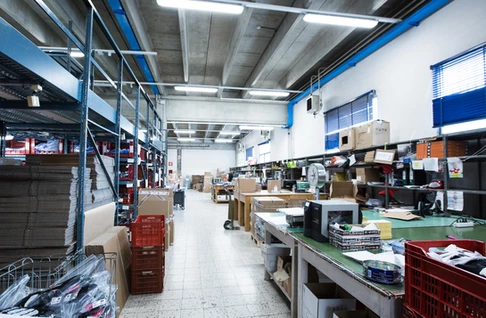
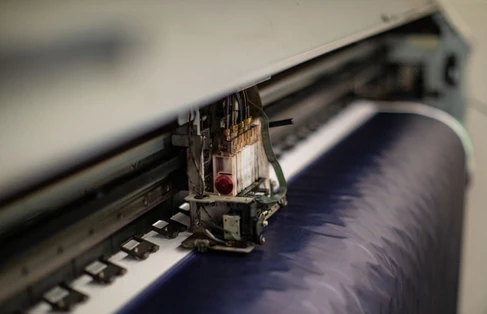
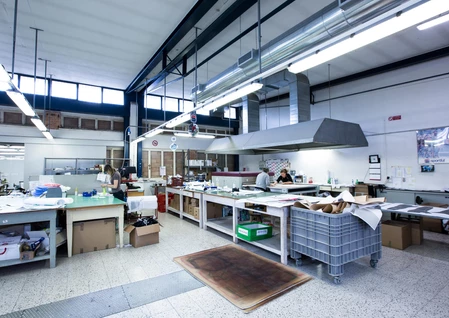
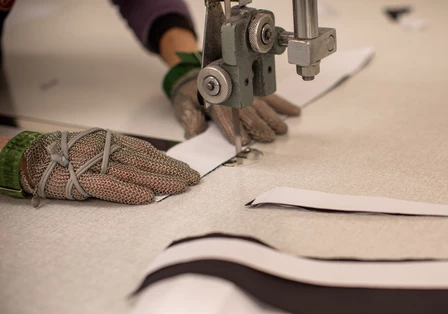
As my tour continued I walked past a huge glass wall, down one of the corridors looking into the main sewing room. Here, well-used sewing machines sat atop workstations covered with a multitude of fabrics. It’s clear for all to see that they are making real tangible products and it relates to years gone by, when skilled workers brought designs to life. But, don’t get me wrong – there were still workers on the sewing machines when I visited. It’s here that special, one-off pieces are produced. Pro riders might need matching shorts to go with a race leader’s jersey, or a latest prototype might need to be made up. It’s the place where some of the ideas are brought into the real world.
All the workers greet me with ‘ciao’, and looked engaged and happy throughout the tour – of course some were a little more engrossed and/or stressed than others. Some of the younger workers mingled with staff who had clearly been working in the industry for decades. The staff are passionate about their craft and are super close to the sport, as most of them ride. Lunch rides are a real thing here – a few k’s from the factory and you’re hitting iconic climbs and roads that are regularly used in the Giro d’Italia. Often these rides are used to test prototypes before they are handed over to the pros for further testing. Many other, bigger, companies head to a foreign location for a few days of intensive testing, but for the crew at Castelli, the testing is in their backyard and it’s at the heart of what makes the company tick. The staff being able to have conversations, a direct relation to products being used in the field, then come back to the factory to tweak pieces, is a huge benefit to the company.
Towards the end of my tour, I finally get to meet the person whom I’ve been in contact with about this visit; Soren Jensen, Head of Castelli’s Global Marketing. He’s insanely busy inside and outside of this building, wearing many hats – mostly all at once. He’s a real nice guy and I instantly notice he’s in athletic shape. I like this, he obviously works hard but doesn’t shy away from riding time. Soren had been a pro for the Topsport-Vlaanderen team, he also raced cross-country mountain bikes and worked at Adidas, then Mavic, before jumping ship to Castelli. He’s super passionate about the sport and our meeting quickly turned into hours of conversation, cycling yarns, history and storytelling. We both have a shared love for the cycling culture. It’s clear to see the brand is in safe hands now and is led by people who live, eat and breath the sport.


